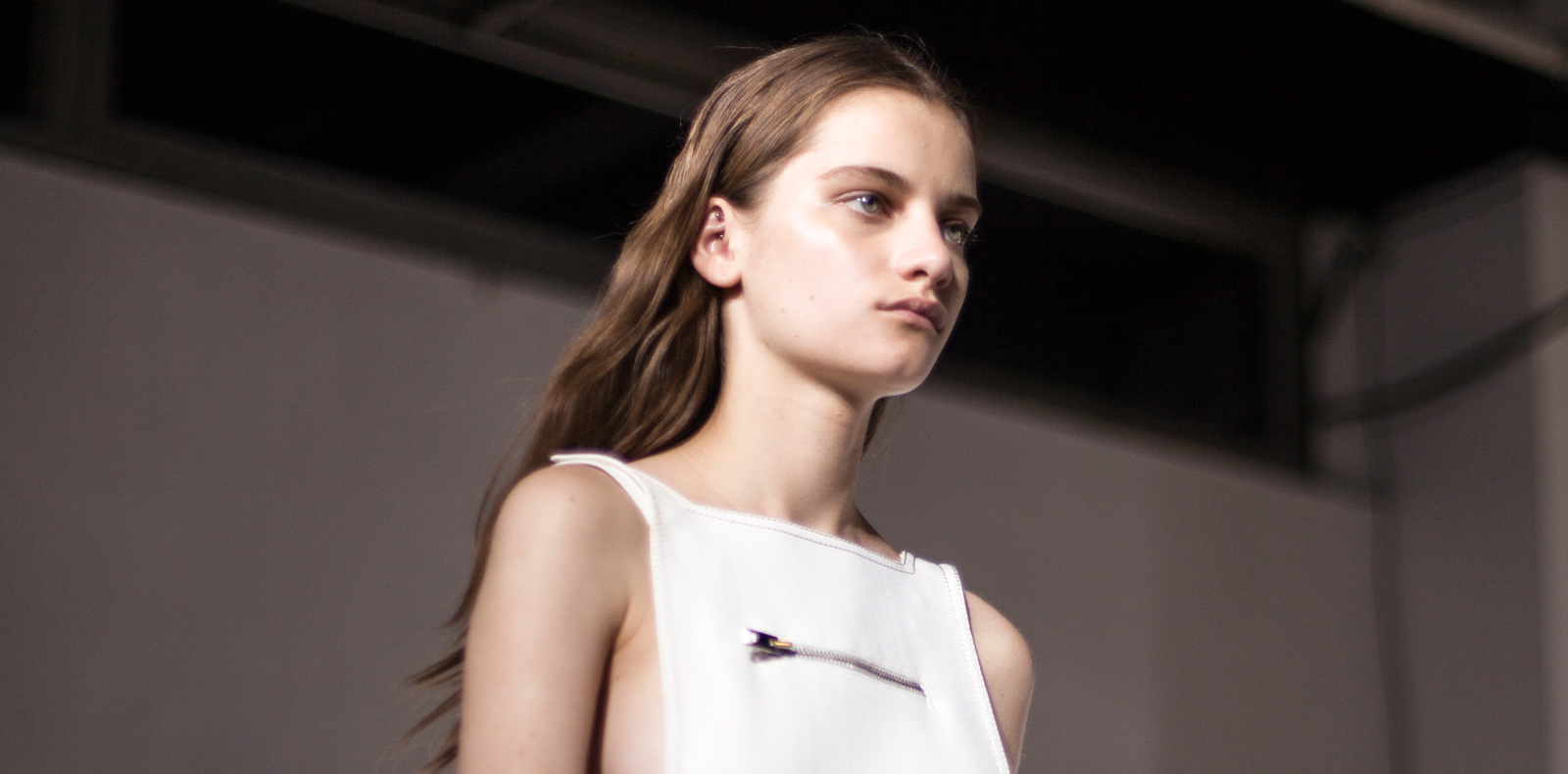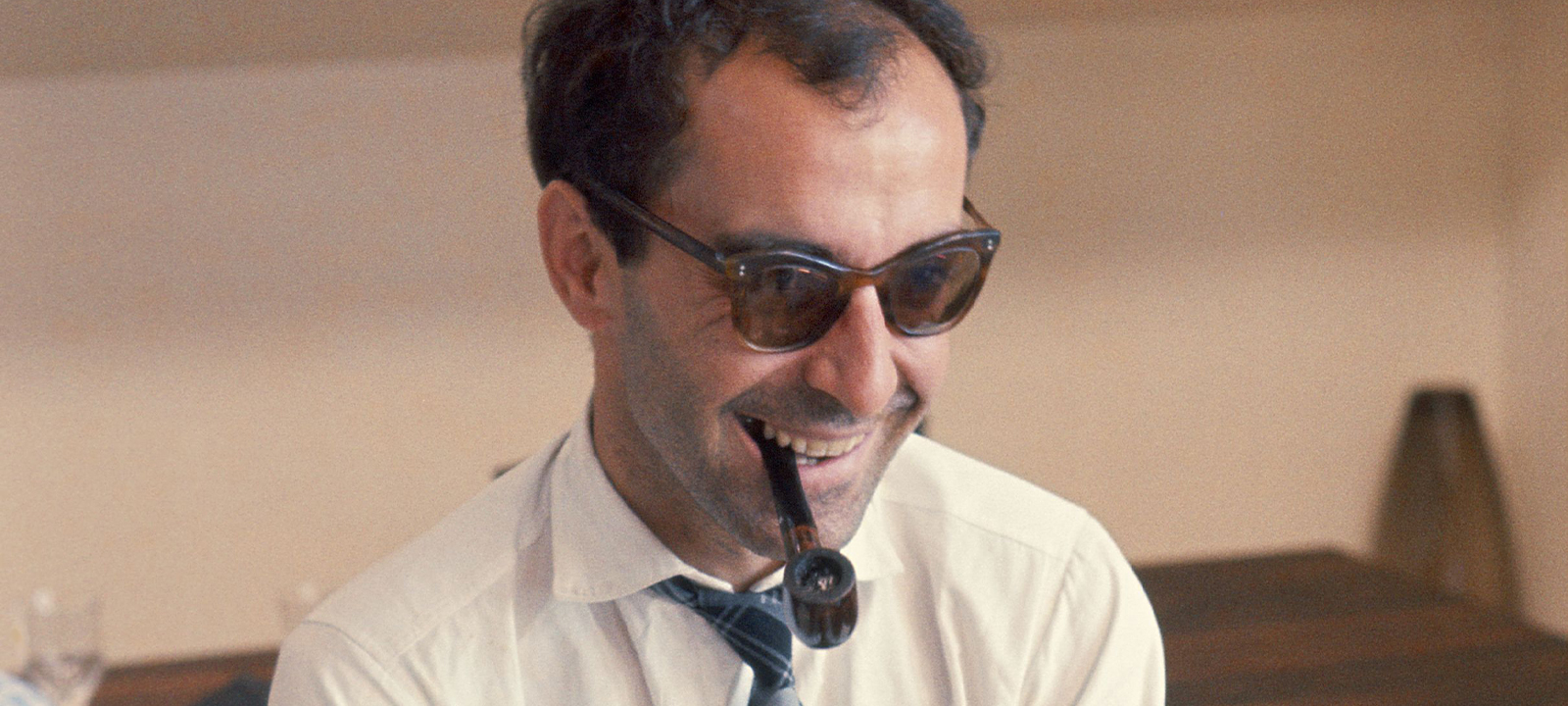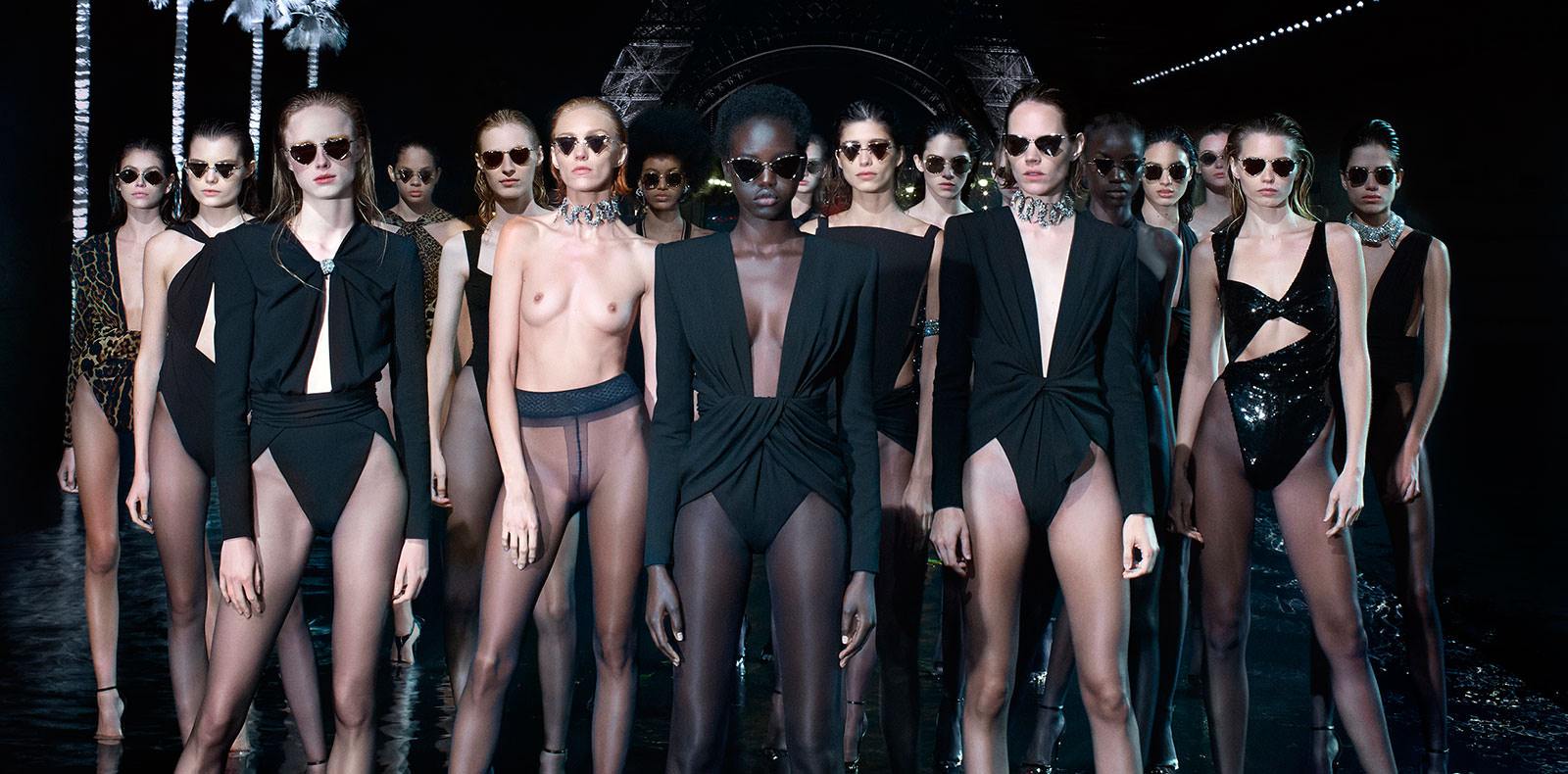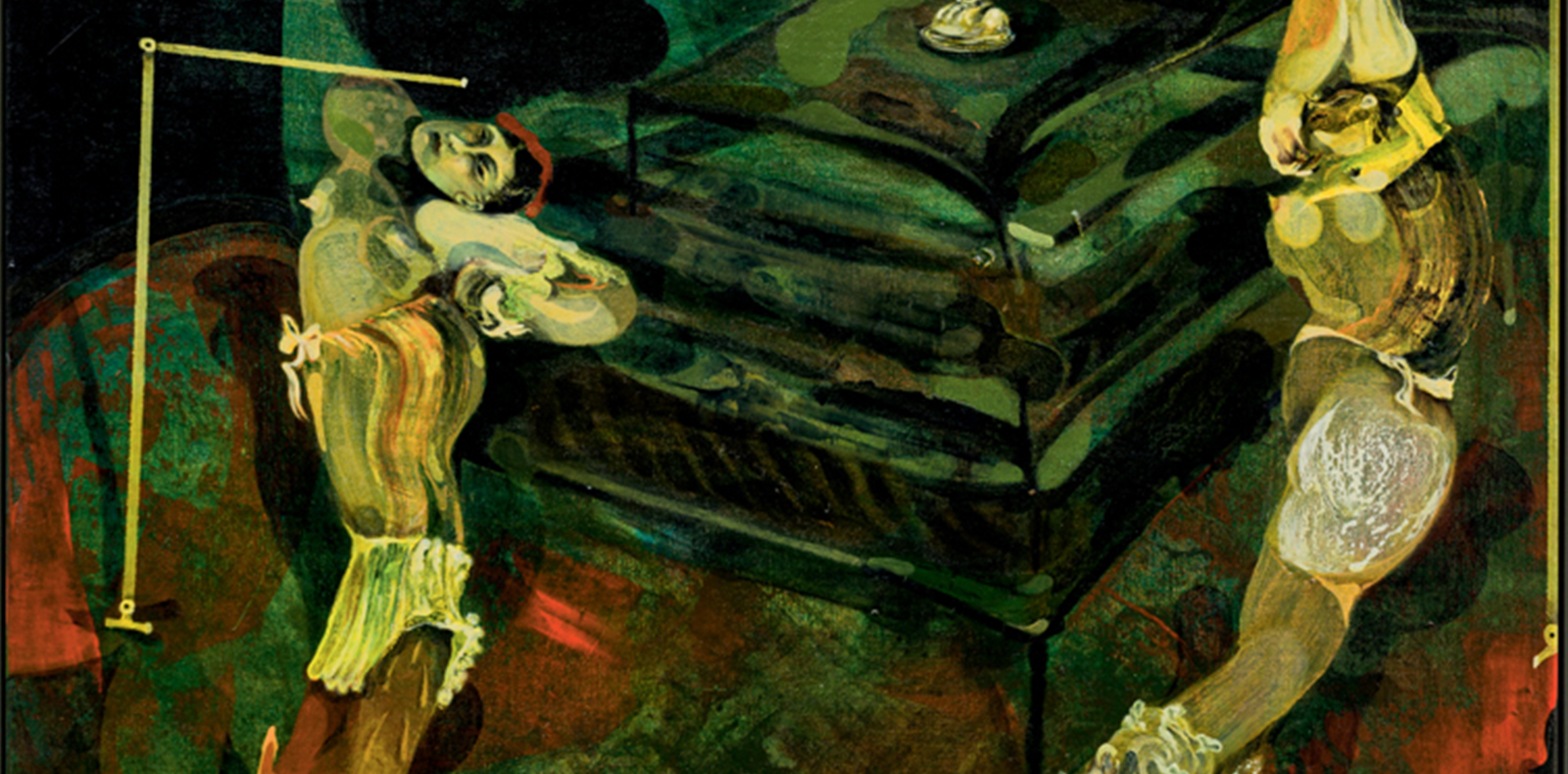
13
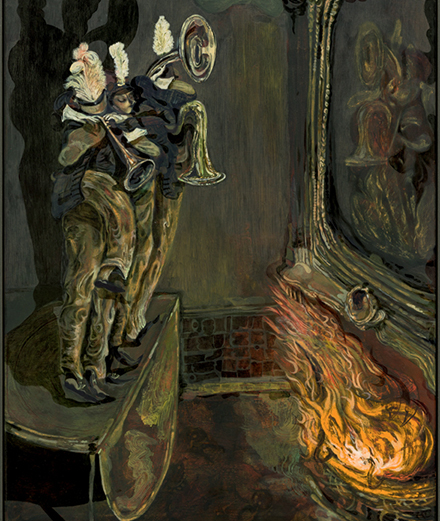
13
Interview with painter Guglielmo Castelli : “Art is the only sign of a man’s passage on earth.”
Hailing from Italy, 35-year-old Castelli seeks inspiration in literature, painting mysterious canvases in which sometimes unidentifiable objects seem to be in the process of mutation – a scrambling of reference points that highlights the fragility of the individual.
Interview by Nicolas Trembley.
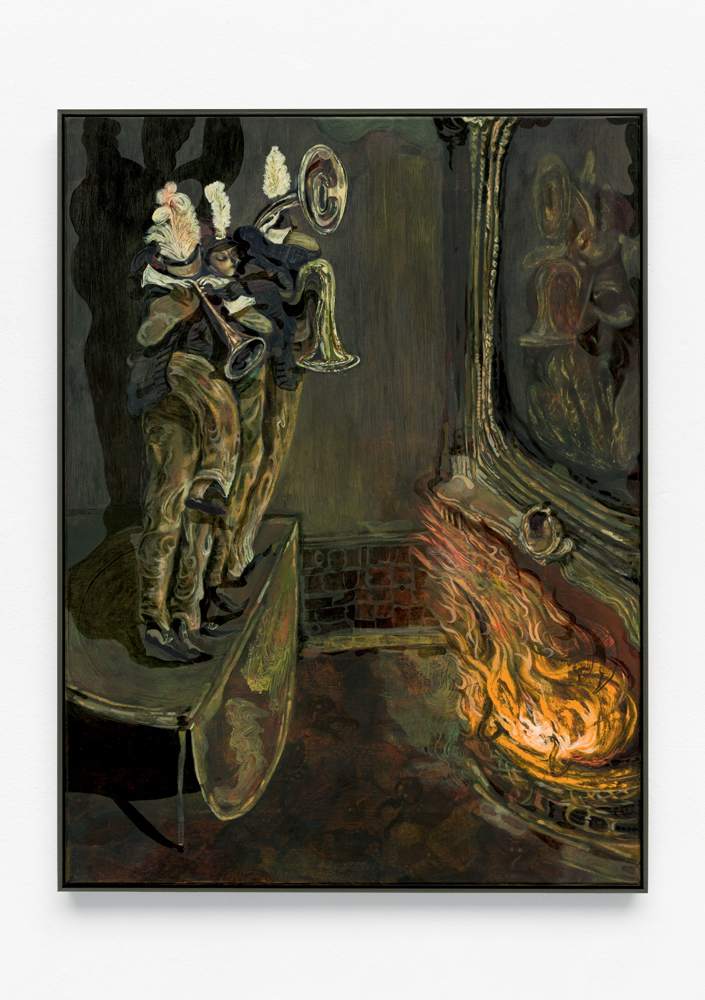
The painter Guglielmo Castelli lives and works in the art hub that is Turin, the city which gave us such singular characters as Carol Rama and Carlo Mollino. Before devoting himself full time to his distinctly oneiric, figurative canvases, he worked as a set and costume designer for the theatre. An impeccable dandy, he produces small-format pictures inspired by literature, but is also an obsessive draughtsman, never leaving home without his moleskin-bound sketchbook. His work often features phantasmal figures whose fluid bodies seem to curl up into the corners of his pictures, a visual universe that recalls certain interior scenes by Édouard Vuillard or bodies as painted by James Ensor. And yet, as an artist, Castelli was heavily shaped by Arte Povera, one of the 20th century’s most im- portant movements, which he dreams of somehow escaping in order to exist. The revelation of last year’s Quadriennale di Roma, Castelli will be putting on a solo show at Mendes Wood DM for this year’s Art Basel Paris.
Numéro : What’s your background?
Guglielmo Castelli : I come from the world of theatre and cinema, which I entered after training as a set designer at the Academy of Fine Arts in Turin. I’ve been lucky enough to be able to experiment in a lot of domains, from scenography to costume design. I come from a working-class industrial city, and I was raised with a strong sense of responsibility. It made me realize that the only way to discover things is by doing them, by being what you say.
Do you remember your first encounter with art?
When I was 15, I saw a photograph of a work by Carol Rama, and I was viscerally attracted to it. The idea that she could live in the same city as me, just a few streets away, made me create stories. Turin is like that – silent, but at the same time full of underground energies, with its grid plan where you can never get lost because you always find yourself. Carol Rama has been a comet of magnificent shadows for many of us, and I owe her a lot. As she said, freedom is relative concept – for a pyromaniac, freedom means the liberty to set fire to things.
“Nowadays being a painter means being responsible for using a very dangerous medium, because it contains all the freedom in the world.”
What was it that made you want to be an artist?
Beckett said “Fail and fail better.” Art gives me the possibility to move on with each attempt, to straighten out doubts in order to create new ones. In those depths, I find myself, digging in. To me, this is what it means to be an artist, having the luxury of uncertainty towards ourselves, and therefore towards others.
What sort of art were you looking at when you started, and what are you looking at today?
There were milder times before, where everything seemed to have more defined boundaries. I looked at my paintings, and to painting in general in a more figurative way. Today the edges of my narrative are more fluid, and I’ve understood how my figuration can be more incisive if I first pass through an abstract process – a mapping of my intentions and bodies that is grafted onto those doubts I mentioned earlier, in such a way as to delineate spaces for manoeuvre within these stories of abandonment.
What does it mean to be a painter in 2022?
For me being a painter has been a sort of “accident”: [Jannis] Kounellis [a key figure in Arte Povera] called himself a painter even though he hadn’t painted a single canvas. I think that nowadays being a painter means being responsible for using a very dangerous medium, because it contains all the freedom in the world. We mustn’t be too indulgent with ourselves when we paint, we must explore everything we’re allowed to do. Because painting can only be done with painting.
What are your sources?
My greatest inspiration comes from literature. The power of a word that becomes an image and how it can create new languages and visual alphabets.
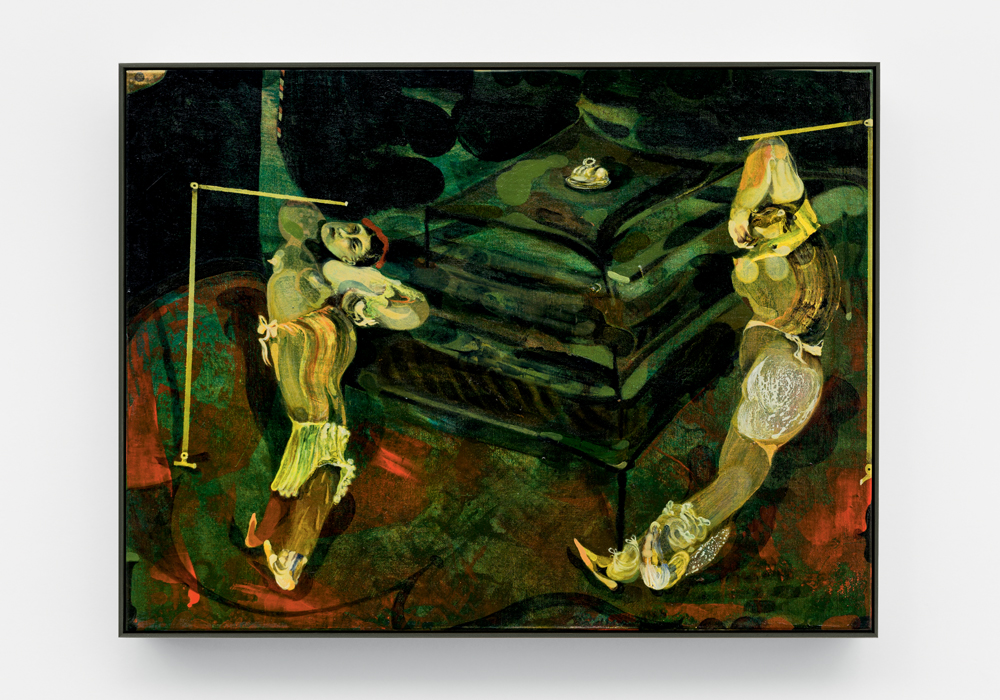
How do you work? Do you always finish a painting before starting another one? Do you work in series? Are you slow?
I’ve been trying for a while to paint two works at the same time, but I find it very difficult. I need to focus on one at a time, to balance all the elements necessary to amplify that sense of instability that I seek and that sense of claustrophobia within my paintings. Before I begin a work on canvas, I first do a preparatory study in which I set the narrative. I’m very precise in these studies, so if I see that it works in them I can speed up the painting process.
How do you choose the colour palette in your paintings?
The chromatic temperature occurs to me by chance while I’m painting, I don’t decide it beforehand. I always start with one chromatic season and then almost always end up with another. I try, however, to keep a perception of stasis, of those moments of light just before the arrival of something – the desperation of sunset and the ineluctability of dawn.
What about your formats?
[Giorgio] Morandi used to say that you can recognize real painters through their small formats. Looking at small works, the viewer must take the time to grasp the details, the confluences and the abandoned things… Nowadays, everything is violently overexposed, even in certain paintings. The small silences that can be cut out on small surfaces are often much more powerful.
“After all, art is the only sign of man’s passage on earth.”
How do you install your works? Is exhibition design important as a vehicle for your message?
Because I studied set design, the space of the installation is fundamental because it allows the narrative to be amplified or restricted. Rather than conveying the message, I prefer to define it as a “path of familiar lexicons.” I often alternate canvases of different sizes with works on paper, which I am very fond of, so as to create a visual seismograph within the viewer.
How do you find the titles for your pieces?
Literature has protected me, raised me and preserved me, and I have often sought refuge in it, borrowing words from great writers. Sometimes there are words that help the image, at other times they’re a stumbling block. But the titles come from the books that accompany me.
Is there anything you would like to make people conscious of through your art?
Sharing, possibility and future. Because, after all, art is the only sign of man’s passage on earth.
What’s your next project?
I’m preparing two projects that I am very committed to. One is a solo show at Galerie Rolando Anselmi in Berlin this September: entitled Imitative Creatures, it will feature the largest work I have ever done as well as other experiments in different media with various shapes. The second is a solo show timed to coincide with Art Basel Paris that I’m putting on with Mendes Wood DM gallery. This one features a series of new works about the physical impossibility, and therefore also the futility, of carrying out actions within a pre-existing scenic space. There will be bullfighters hovering in foreign territories, equestrians in free fall and dance classes that fail before they begin. Humans too human.
Guglielmo Castelli is represented by Galerie Rolando Anselmi and Mendes Wood DM.






